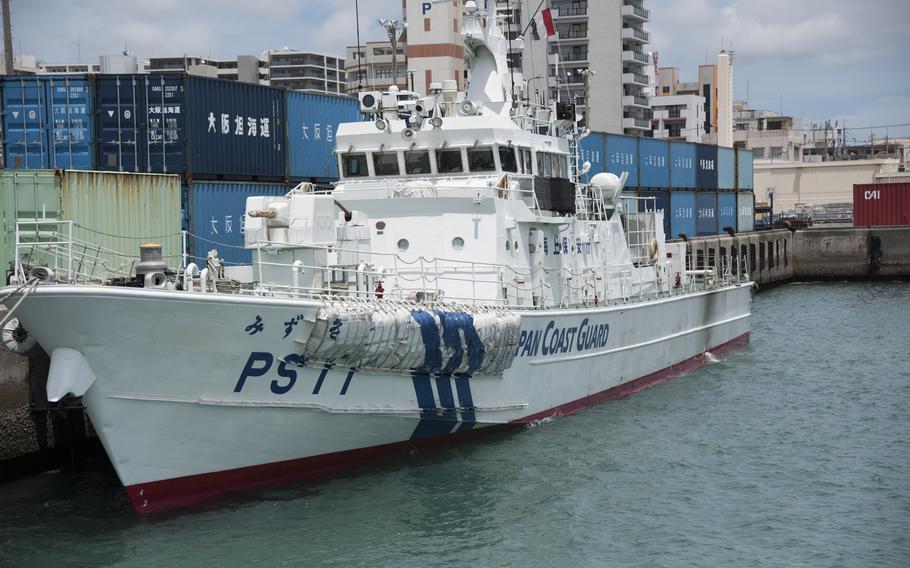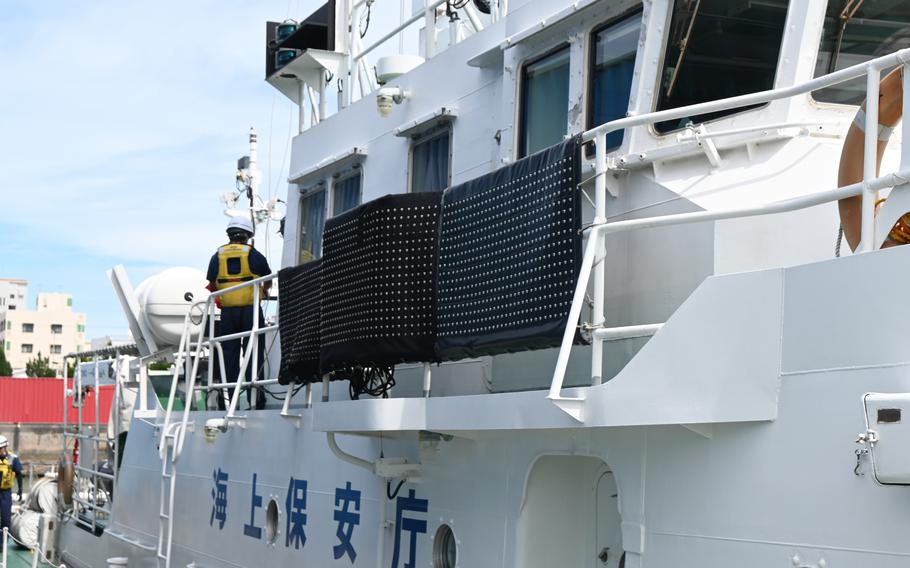Asia-Pacific
Japan cautious as Chinese vessels set new record for presence near Senkakus
Stars and Stripes August 14, 2025

Japan coast guard vessel PS Mizuki is docked at Naha New Port, Okinawa, Japan, Aug. 8, 2025. (Brian McElhiney/Stars and Stripes)
ABOARD THE PS MIZUKI, Okinawa — China and Japan remain locked in a game of cat-and-mouse near the Senkaku Islands, with China this year setting another record for the number of consecutive days its vessels have sailed near the disputed islets in the East China Sea.
As of Thursday, Chinese vessels have been spotted on 269 consecutive days within the Senkakus’ contiguous zone, a 24-mile-wide band beyond the 12-mile territorial limit, a coast guard spokesman said by phone that day. The previous record was 215 days between Dec. 22, 2023, and July 23, 2024.
The chain of five islets and three rocky protrusions are administered by Japan but also claimed by China and Taiwan. They are a flashpoint between Japan and China.
Chinese vessels have entered the territorial limit 20 times since Jan. 1, prompting Japan’s coast guard to send its own vessels to meet them, the spokesman said.
China’s vessels have become more aggressive, but Japan’s coast guard has not escalated its approach to deterring vessels that enter its territorial waters, according to Naha Coast Guard Office director Momotoshi Saisho.
During an Aug. 8 media tour aboard the PS Mizuki at Naha New Port, Saisho touched on the coast guard response to those incursions.
The longest stay inside territorial waters around the Senkakus occurred in March when a Chinese coast guard vessel lingered for 92 hours and eight minutes, according to a news release at the time.

An electronic signboard used to flash warning messages at vessels sailing near Japan's territory hang from the starboard side of the coast guard vessel PS Mizuki, at Naha New Port, Okinawa, Japan, Aug. 8, 2025. (Keishi Koja/Stars and Stripes)
On May 3, the Japan Air Self-Defense Force scrambled fighters in response to a helicopter launched from a Chinese coast guard vessel inside the Senkakus’ territorial limit, according to a Ministry of Defense news release at the time. The helicopter flight lasted about 15 minutes, the ministry said.
Since 2015, some Chinese coast guard ships approaching the Senkakus are armed with deck-mounted machine guns, according to the Ministry of Defense 2025 white paper.
The Mizuki is armed with a 20 mm machine gun, Saisho said. However, the coast guard does not fire at intruding vessels, the spokesman said Thursday.
The Mizuki, about 150 feet long and weighing 195 tons, was one of two coast guard patrol vessels rammed by a Chinese fishing boat in the Senkaku territorial waters in September 2010.
Japan accused the fishermen of intentionally causing the collision.
The Mizuki is usually dispatched to meet Chinese fishing vessels, Saisho said. The coast guard will always dispatch a “larger number” of ships than the intruding force.
“The vessels that are dispatched to the Senkakus and other intrusion cases might be selected depending on the size and number of the ships of the opponent,” he said.
Japan’s coast guard vessels will flash messages in Chinese, English, Korean, Russian or other languages on a large electronic signboards, which hang on both sides of the Mizuki.
“In Hokkaido you might need Russian; around Kyushu it might be Korean,” Saisho said. “In Okinawa, we usually first warn in English and then in Chinese, depending on the boat that is intruding.”
Messages may begin with, “Immediately leave Japan’s territorial waters,” and progress in urgency to, “We will sail alongside you and board your vessel,” or, “We will start firing water cannons,” according to information posted in the ship’s control room.
However, the coast guard has “never fired warning shots or shot water cannons at Chinese vessels around the Senkakus,” the spokesman said Thursday.
Some Japanese government officials may speak to the press only on condition of anonymity.